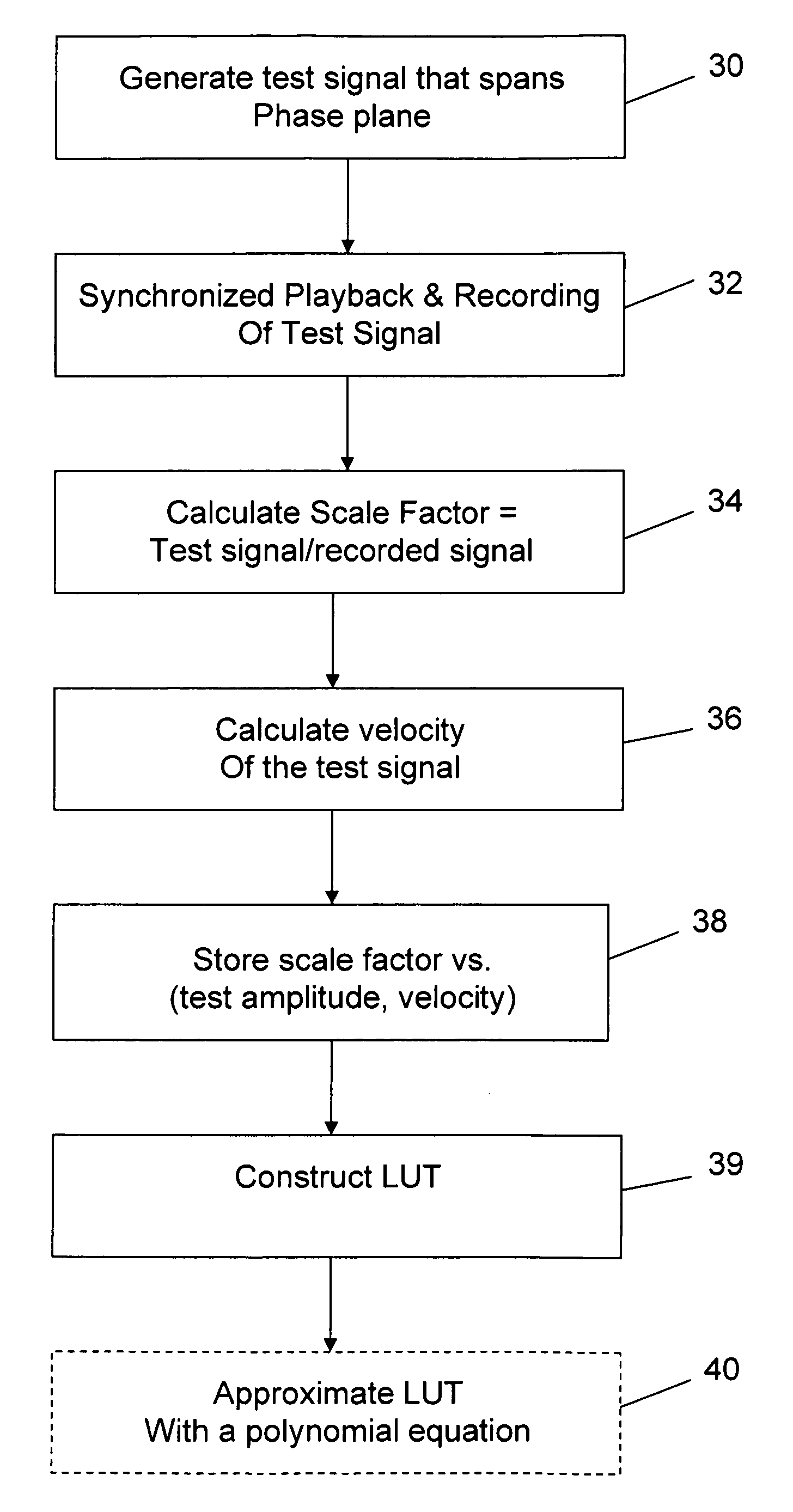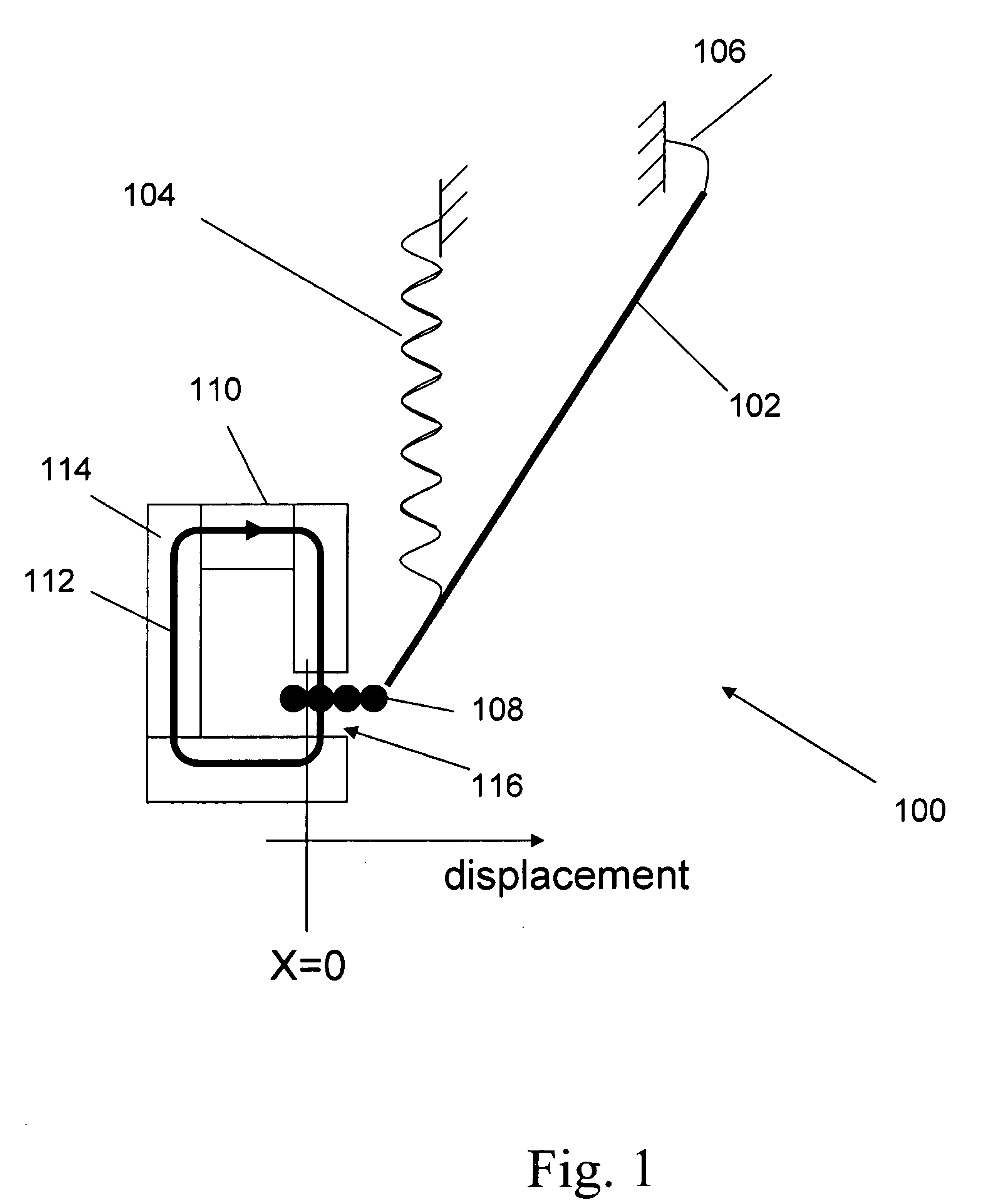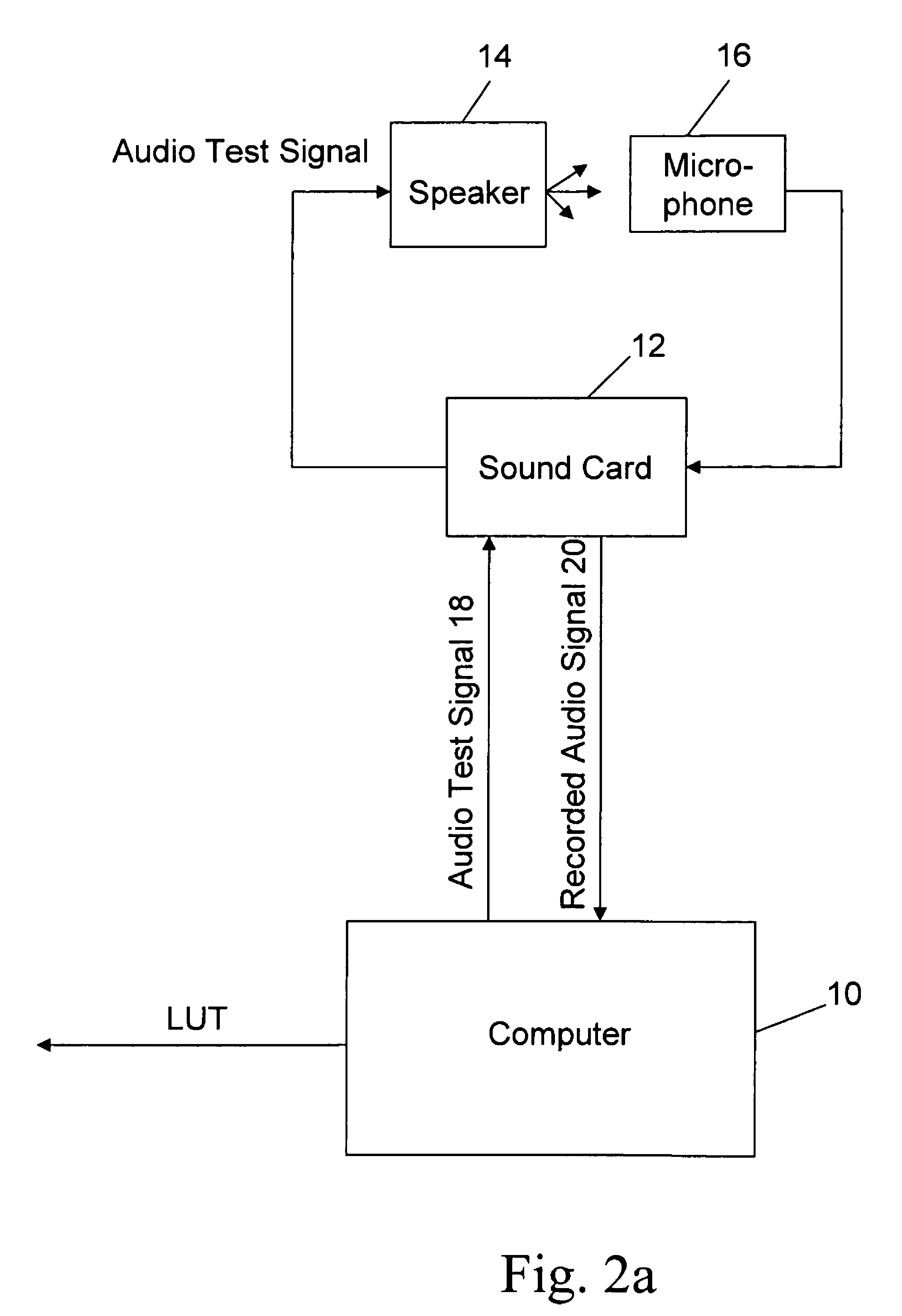System and method for compensating memoryless non-linear distortion of an audio transducer
a non-linear distortion and audio transducer technology, applied in the field of audio transducer compensation, can solve the problem of significant nonlinearity in transient non-stationary regions of audio signals
- Summary
- Abstract
- Description
- Claims
- Application Information
AI Technical Summary
Benefits of technology
Problems solved by technology
Method used
Image
Examples
Embodiment Construction
[0018]The present invention describes a low-cost, real-time solution for compensating non-linear distortion in an audio transducer such as a speaker, earphone or microphone. As used herein, the term “audio transducer” refers to any device that is actuated by power from one system and supplies power in another form to another system in which one form of the power is electrical and the other is acoustic or electrical, and which reproduces an audio signal. The transducer may be an output transducer such as a speaker or earphone or an input transducer such as a microphone. An exemplary embodiment of the invention will be now be described for a loudspeaker that converts an electrical input audio signal into an audible acoustic signal.
[0019]A reading of Klippel's paper led us to the observation that the primary non-linear distortion that contributes to HD and IMD is ‘memoryless’. The physical causes of this distortion can be described entirely by a 1st order approximation of the potential...
PUM
 Login to View More
Login to View More Abstract
Description
Claims
Application Information
 Login to View More
Login to View More - R&D
- Intellectual Property
- Life Sciences
- Materials
- Tech Scout
- Unparalleled Data Quality
- Higher Quality Content
- 60% Fewer Hallucinations
Browse by: Latest US Patents, China's latest patents, Technical Efficacy Thesaurus, Application Domain, Technology Topic, Popular Technical Reports.
© 2025 PatSnap. All rights reserved.Legal|Privacy policy|Modern Slavery Act Transparency Statement|Sitemap|About US| Contact US: help@patsnap.com



